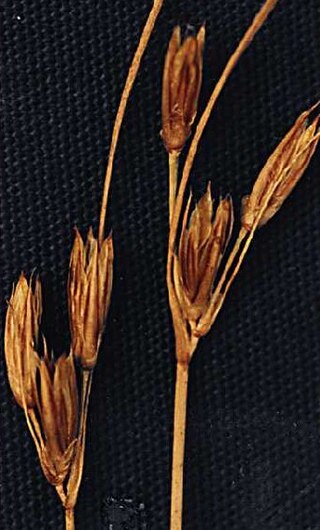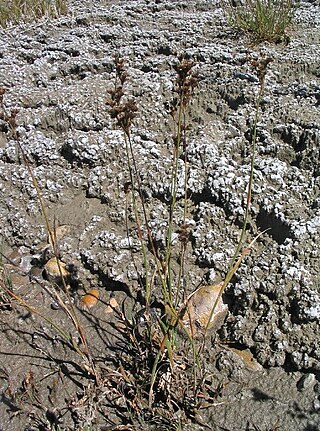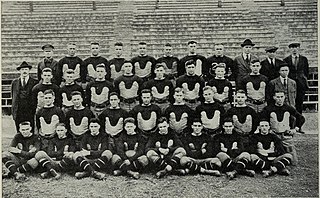
Chives, scientific name Allium schoenoprasum, is a species of flowering plant in the family Amaryllidaceae that produces edible leaves and flowers. Their close relatives include the common onions, garlic, shallot, leek, scallion, and Chinese onion.

A gold rush or gold fever is a discovery of gold—sometimes accompanied by other precious metals and rare-earth minerals—that brings an onrush of miners seeking their fortune. Major gold rushes took place in the 19th century in Australia, New Zealand, Brazil, Chile, South Africa, California, the United States, and Canada while smaller gold rushes took place elsewhere.

Geoffrey Roy Rush is an Australian actor. He is known for his eccentric leading man roles on stage and screen. He is among 24 people who have won the Triple Crown of Acting, having received an Academy Award, a Primetime Emmy Award and a Tony Award. He also received three British Academy Film Awards, two Golden Globe Awards, and four Screen Actors Guild Awards. Rush is the founding president of the Australian Academy of Cinema and Television Arts and was named the 2012 Australian of the Year.

James Andrew Rushing was an American singer and pianist from Oklahoma City, Oklahoma, U.S., best known as the featured vocalist of Count Basie's Orchestra from 1935 to 1948.

Ian James Rush is a Welsh former professional footballer who played as a forward. At club level Rush played for Liverpool from 1980–1987 and 1988–1996. He is the club's all-time leading goalscorer, having scored a total of 346 goals in all competitions at the club. At international level, Rush made 73 appearances for the Wales national football team and remained the record goalscorer for his country until 2018, with 28 goals between 1980 and 1996.

Butomus umbellatus is a Eurasian plant species in the family Butomaceae. It is the only species in the family. Common names include flowering rush or grass rush. Introduced into North America as an ornamental plant it has now become a serious invasive weed in the Great Lakes area and in parts of the Pacific Northwest. In Israel, one of its native countries, it is an endangered species due to the habitat loss. It can also be found in Great Britain locally, for example at the Caldicot and Wentloog Levels The plant is a rhizomatous, hairless, perennial aquatic plant. Its name is derived from Greek bous, meaning "cow", "ox" etc. and tome, a cut, which refers to the plant's swordlike leaves.

Juncaceae is a family of flowering plants, commonly known as the rush family. It consists of 8 genera and about 464 known species of slow-growing, rhizomatous, herbaceous monocotyledonous plants that may superficially resemble grasses and sedges. They often grow on infertile soils in a wide range of moisture conditions. The best-known and largest genus is Juncus. Most of the Juncus species grow exclusively in wetland habitats. A few rushes, such as Juncus bufonius are annuals, but most are perennials.

Spartium junceum, known as Spanish broom, rush broom, or weaver's broom, it is a species of flowering plant in the family Fabaceae and the sole species in the genus Spartium. It is closely related to the other brooms.

Scheuchzeria palustris, is a flowering plant in the family Scheuchzeriaceae, in which there is only one species and Scheuchzeria is the only genus. In the APG II system it is placed in the order Alismatales of the monocots.

Allen Ralph "Buck" Flowers, Jr. was an American college football player who was a halfback for the Davidson Wildcats football team of Davidson College in 1917 and for the Georgia Tech Golden Tornado football team of the Georgia School of Technology in 1918, 1919 and 1920.

Juncus mertensianus is a species of rush known by the common name Mertens' rush or Alaska rush. It is native to much of western North America from Alaska to Saskatchewan to New Mexico, where it grows in wet mountainous areas such as riverbanks and alpine meadows. This is a clumping perennial herb growing from a vertical rhizome. Its smooth, flat stems grow to a maximum height near 40 centimeters. Its few leaves are located at the base and also along the stem. The inflorescence is made up of usually one cluster of many flowers. Each flower has shiny dark brown to black tepals 3 to 4 millimeters long, six stamens with yellowish anthers, and long reddish stigmas, as in image at left. The fruit is a dark, oblong capsule, as in image at right.

Juncus acuminatus is a species of rush known by the common names tapertip rush, tufted rush and sharp-fruited rush. It is native to North and Central America, where it can be found in and around water bodies from central Canada to Honduras. It is a rhizomatous perennial herb forming clumps up to about 80 centimeters tall. The inflorescence is an open array of many clusters of up to 20 flowers each. The flower has pointed segments a few millimeters long which may be light reddish brown to greenish in color.

Juncus bolanderi is a species of rush known by the common name Bolander's rush. It is native to western North America from British Columbia to northern California, where it grows in many types of wet habitat, such as marshes, beaches, and meadows. It is a rhizomatous perennial herb forming bunches of smooth stems up to about 80 centimeters long. The inflorescence is made up of one or more clusters of many tiny flowers accompanied by one long bract. Each flower has brown, pointed segments each about 3 millimeters long.

Juncus parryi is a species of rush known by the common name Parry's rush. It is native to western North America from British Columbia and Alberta to California to Colorado, where it grows in moist and dry spots in mountain habitat, including rocky talus and other areas in the subalpine and alpine climate. This is a rhizomatous perennial herb producing a dense clump of stems up to about 30 centimeters tall. There are short, thready leaves around the stem bases. The inflorescence is a cluster of flowers accompanied by a long, cylindrical bract which appears like an extension of the stem. The flower is made up of a few pointed, brown segments with membranous edges.

Juncus regelii is a species of rush known by the common name Regel's rush. It is native to western North America from British Columbia to Utah, where it grows in moist mountainous habitat, such as meadows. This is a rhizomatous perennial herb producing a dense clump of flattened stems up to about 60 centimeters tall. The inflorescence is made up of one or more thin or dense clusters of up to 30 flowers each. The flower has narrow, pointed brown to greenish segments.

Juncus saximontanus is a species of rush known by the common name Rocky Mountain rush. It is native to much of western North America from Alaska to central Mexico, where it grows in wet habitat, often in mountainous areas, such as bogs and moist meadows.
Juncus triformis is an uncommon species of rush known by the common names Yosemite dwarf rush and long-styled dwarf rush.
Juncus uncialis is a species of rush known by the common names twelfth rush and inch-high rush. It is native to the western United States, where it is known from wet habitat such as vernal pools. This is a petite annual herb forming dense clumps of hair-thin green stems no more than 3 or 4 centimeters high. The inflorescence is made up of a single tiny flower atop each stem. The flower has several reddish segments about 2 to 5 millimeters long wrapped around the developing fruit.

The 1920 Georgia Tech Golden Tornado football team represented the Georgia Tech Golden Tornado of the Georgia Institute of Technology during the 1920 Southern Intercollegiate Athletic Association football season. The Tornado was coached by William Alexander in his first year as head coach. The team compiled a record of 8–1, outscored opponents 312 to 16, and tied for first place with Georgia and Tulane in the Southern Intercollegiate Athletic Association (SIAA).
Quinton Lenard Flowers is an American football quarterback for the Orlando Guardians of the XFL. He played college football for the South Florida Bulls, where he is known as "one of the most versatile players" in school history.

















